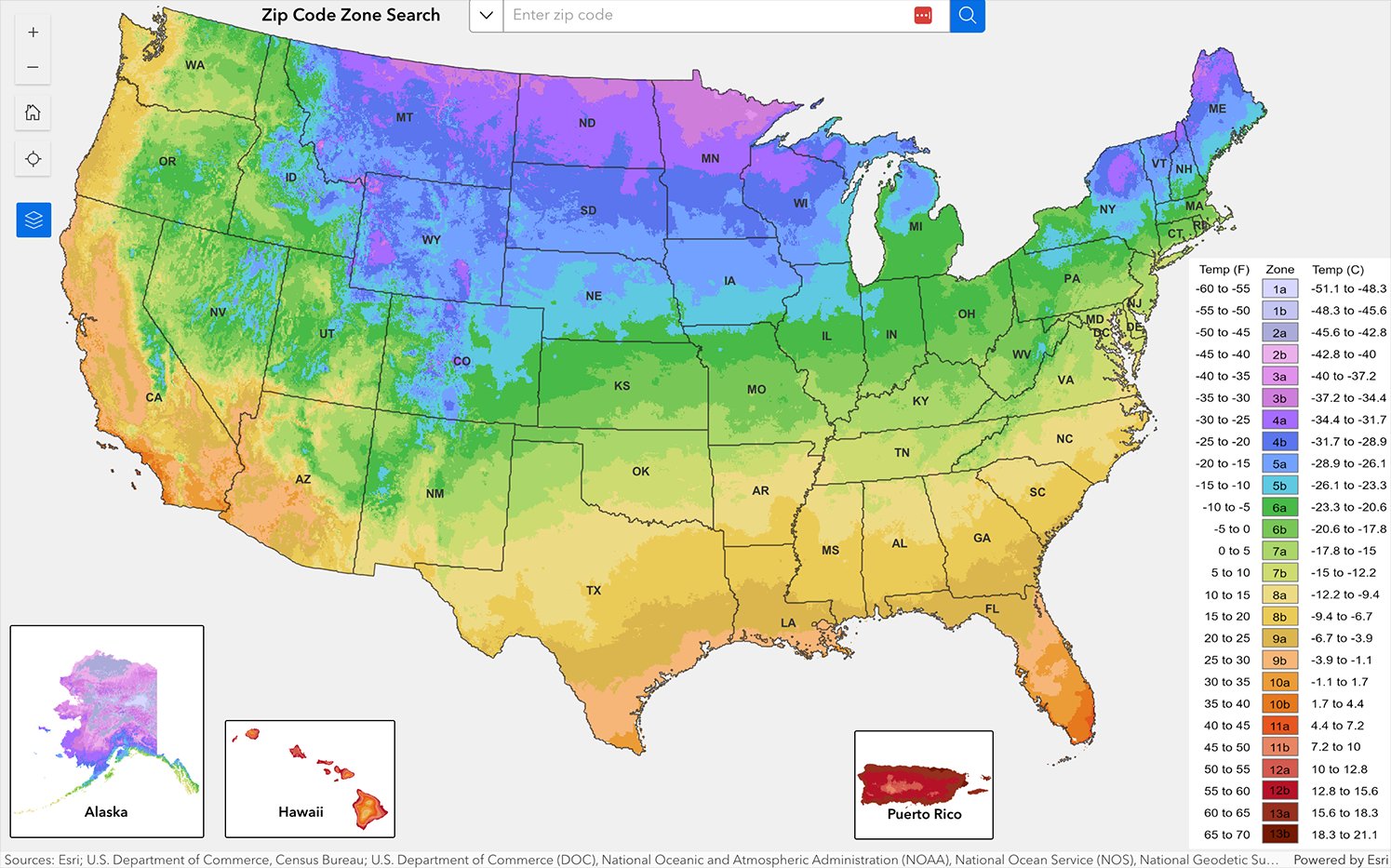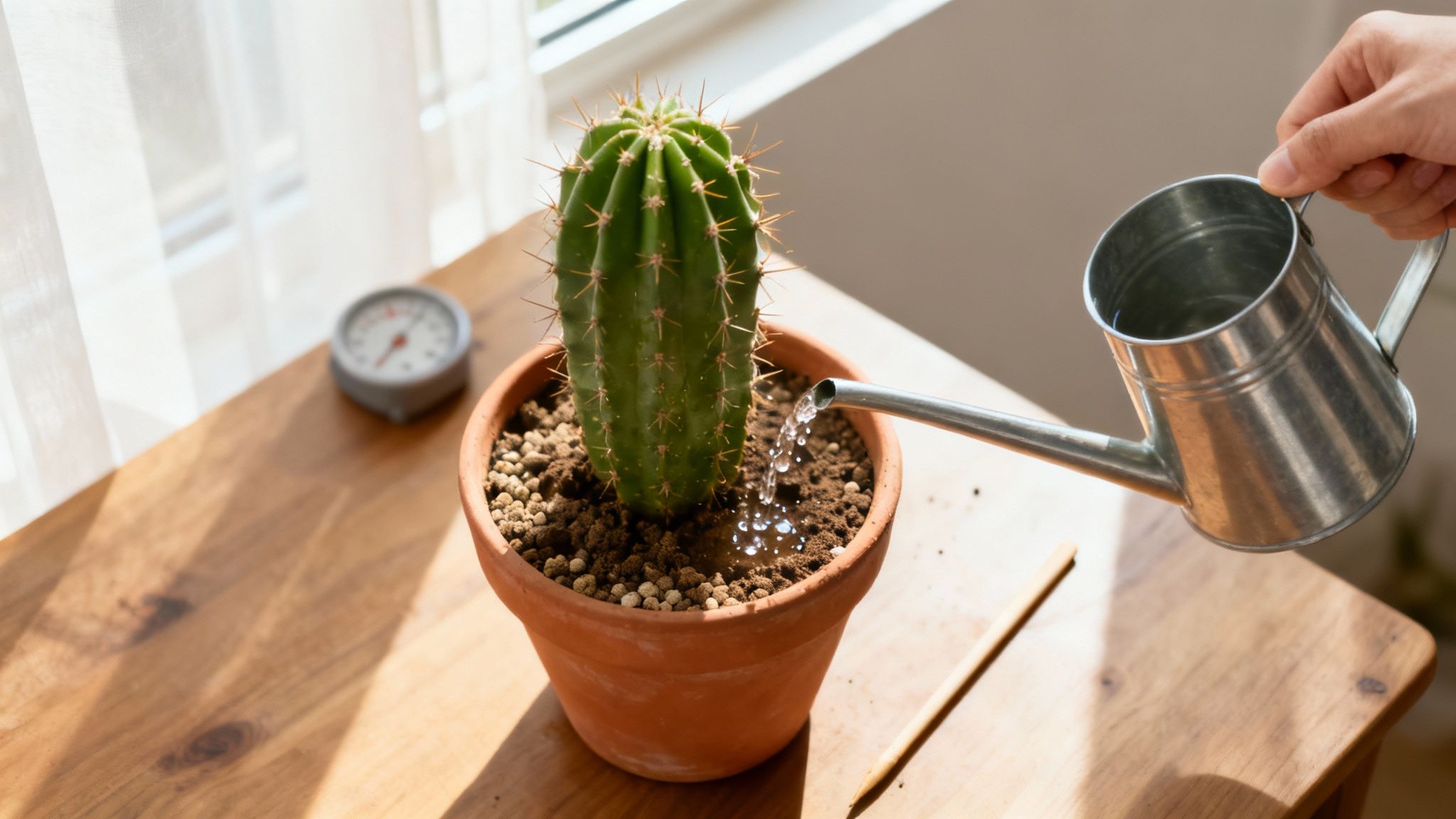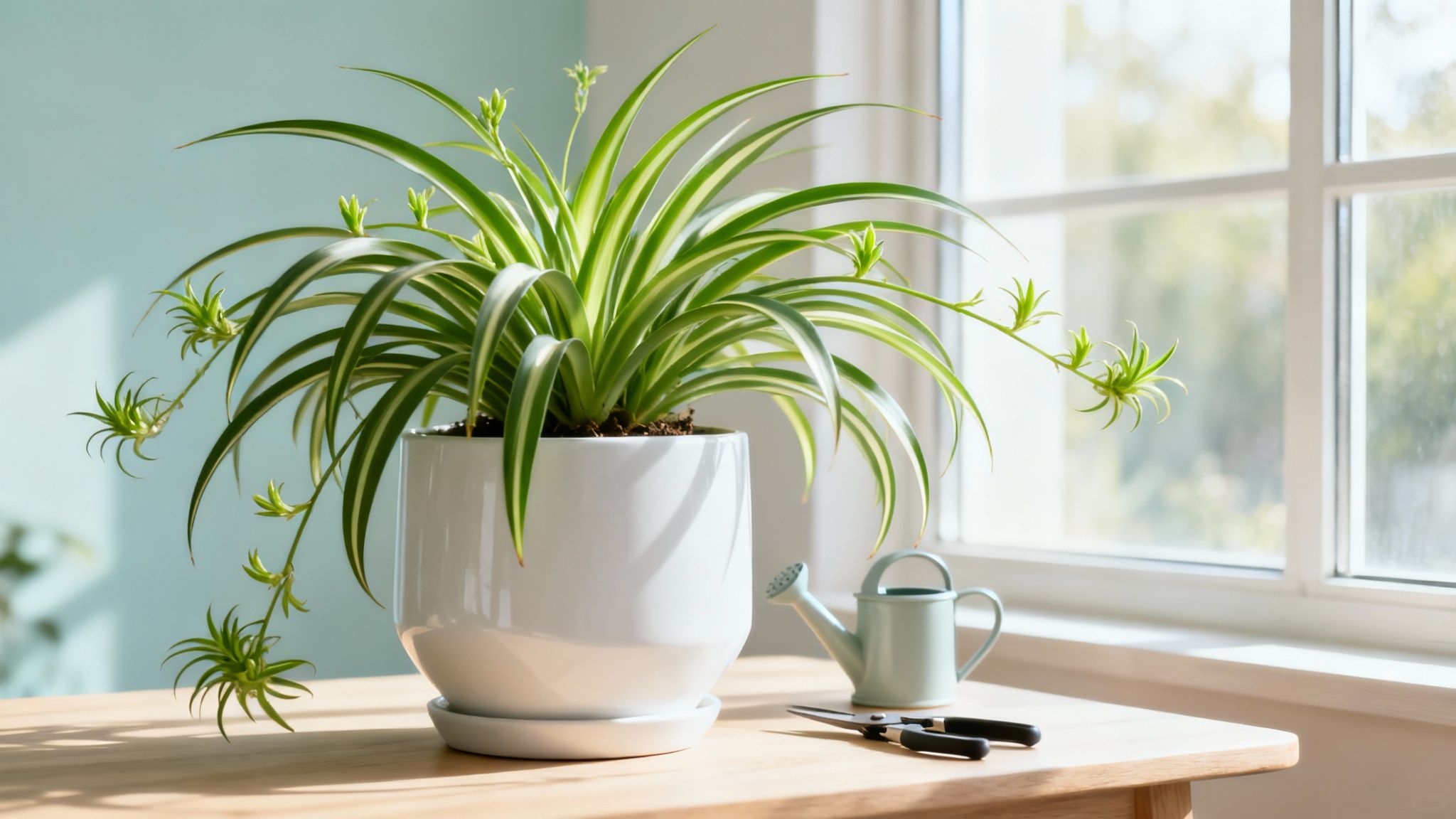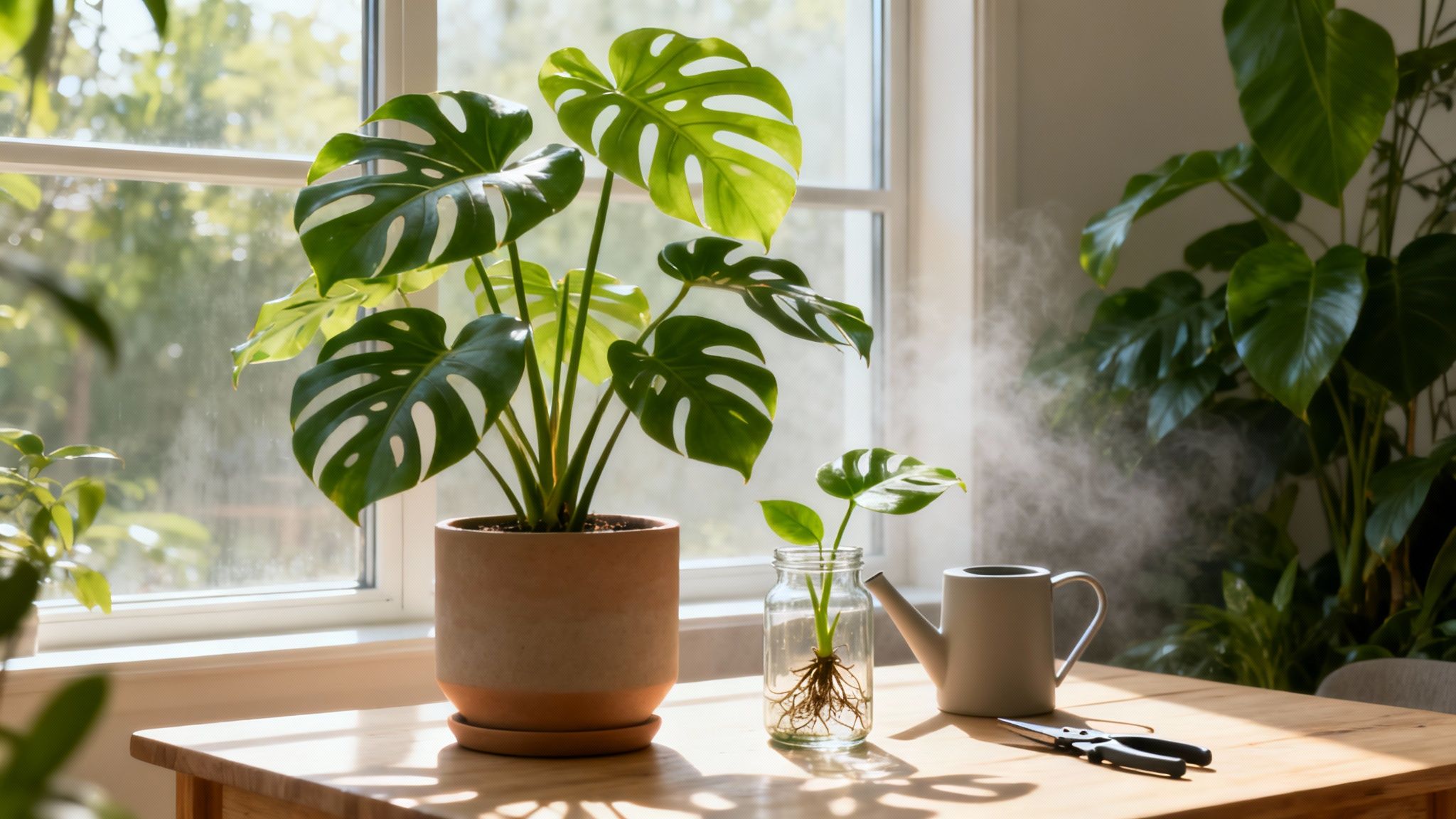Ever wondered why that gorgeous lavender (Lavandula angustifolia) thrives in your cousin's garden just one state over but gives up the ghost in yours? The answer, more often than not, is hiding in plain sight on the USDA Planting Zone Chart. Think of it as the ultimate climate cheat sheet for your garden, a foundational tool that helps you choose plants that will not just survive, but truly flourish year after year.
Getting this one thing right is the secret to moving past guesswork and into confident, successful gardening. In this guide, we'll break down exactly what these zones mean, how to find yours in seconds, and how this single piece of data can save you time, money, and heartache. You'll learn to build a resilient garden that's perfectly in sync with your local climate.
What Is the USDA Plant Hardiness Zone Chart?
The USDA Plant Hardiness Zone Chart is an essential resource for gardeners, providing valuable insights into the coldest temperatures a region experiences during winter. This information is crucial for determining which plants are likely to thrive in specific areas. For further details and to explore the chart, visit USDA Plant Hardiness Zone Map.
At its core, the chart is a standard developed by the U.S. Department of Agriculture that helps predict whether a plant can survive the winter in your specific location. It slices the continent into 13 main zones, each one representing a 10°F (about 5.6°C) range of the average annual extreme minimum temperature. This single piece of information is the bedrock of successful long-term gardening, especially for perennials, shrubs, and trees—the plants you hope will greet you again each spring.
Breaking Down the Zones
Each zone on the map, from the frigid Zone 1 to the balmy Zone 13, gives you a clear benchmark for cold tolerance.
Zone Number (1-13): This is the main event. A lower number means colder average winter lows. It's that simple.
Sub-zone Letter (a/b): To get more specific, each zone is split into two 5°F sub-zones. Zone 'a' is the colder half, and 'b' is the warmer half. For instance, Zone 7a expects its coldest nights to dip between -15°F to -10°F (-26.1°C to -23.3°C), while Zone 7b is a touch milder at -10°F to -5°F (-23.3°C to -20.6°C).
Gardener's Insight: That 'a' and 'b' distinction might seem small, but it can absolutely be the difference between a treasured Japanese Maple (Acer palmatum) surviving a harsh winter or succumbing to frost.
Once you understand this system, it completely changes how you shop for plants. You stop guessing and start choosing varieties proven to be tough enough for your backyard's climate.
From Hand-Drawn Charts to Digital Precision
The idea of mapping plant hardiness has a rich history, evolving from early maps in the 1920s to the first official USDA version in 1960. The latest 2023 update is a prime example of modern precision, pulling data from over 13,625 weather stations to offer unprecedented accuracy. If you're curious, you can learn more about the fascinating evolution of these gardening maps. This level of detail empowers you to make smarter choices. While the official chart is the perfect starting point, apps like Tendra take it a step further, integrating this data to help you connect with local gardeners in your exact zone, so you can share real-time successes and challenges.
How to Find and Understand Your Planting Zone
Nailing down your planting zone is one of the fastest, most impactful things you can do for your garden. The best method is to go straight to the source: the official, interactive USDA Plant Hardiness Zone Map online.
Using the Official USDA Map
The process couldn't be easier. Just head over to the USDA's Plant Hardiness website and enter your ZIP code into the search bar. In an instant, the map will pinpoint your location and reveal your precise zone.
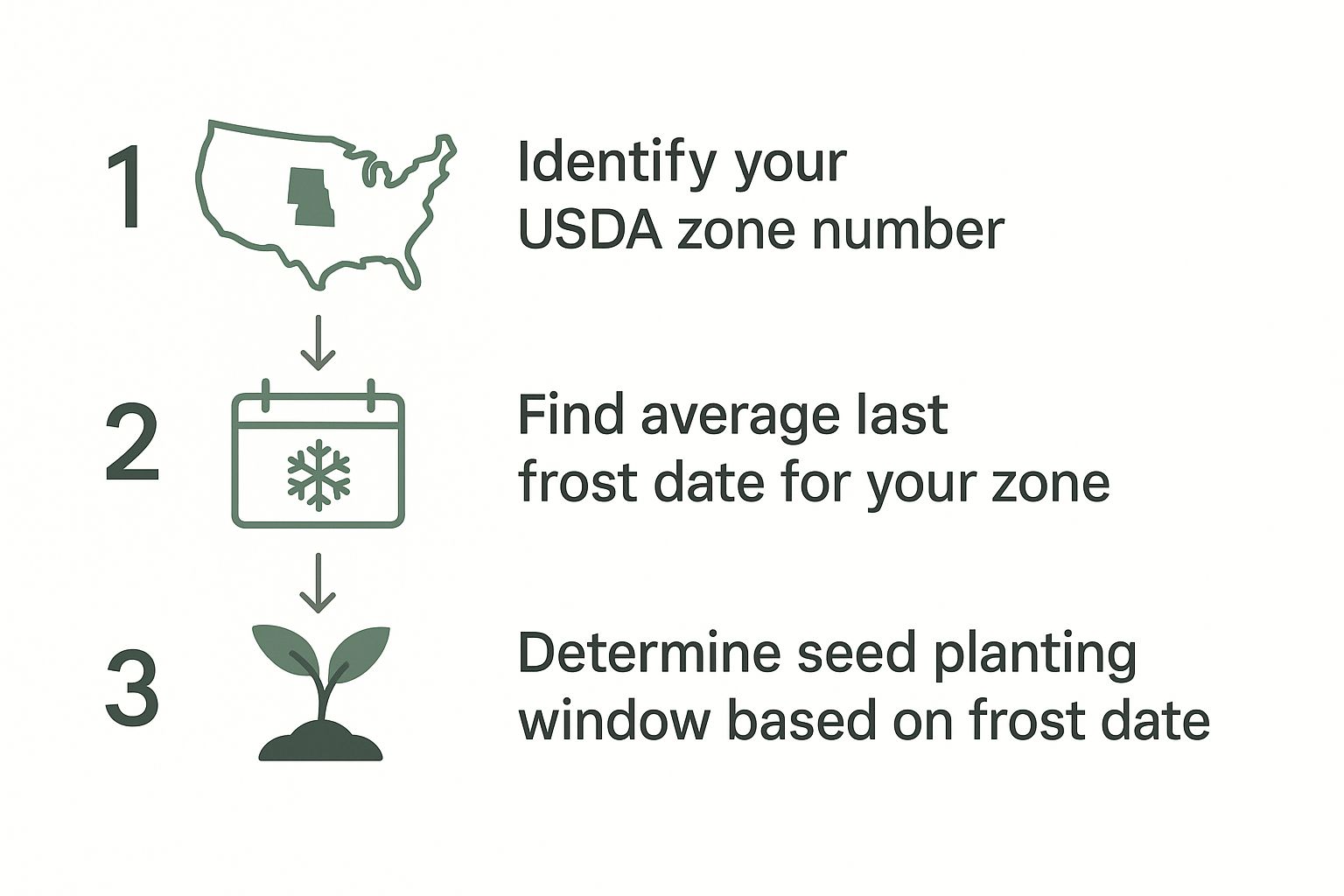
As you can see, the interactive tool makes finding your spot on the detailed map effortless. Once you have your zone—say, 7b or 9a—the next step is understanding what that code truly means for your garden.
Beyond the ZIP Code: Your Garden's Microclimate
While your official zone is an excellent baseline, every garden has its own unique personality. Those small variations in temperature, sun, and wind are called microclimates, and they can be a game-changer.
Did You Know? A city garden surrounded by heat-absorbing pavement can often act as if it's in a half-zone warmer than a rural garden just a few miles away. This is the classic "urban heat island" effect at work.
You likely have several microclimates in your own backyard, created by factors like:
Structures: A south-facing brick wall soaks up sun all day and radiates warmth at night, creating a cozy spot for heat-loving plants.
Elevation: Cold air sinks. A garden at the bottom of a slope can become a "frost pocket," making it noticeably colder than higher ground.
Windbreaks: A solid row of evergreen trees can shield a section of your garden from brutal winter winds, effectively creating a more protected climate.
Getting to know these pockets allows you to place plants strategically. This is where local knowledge really shines. When you create your profile in the Tendra app, it automatically identifies your zone and connects you with a community of local growers—your Twin Plant Mates—who can share invaluable insights about microclimates that no map ever could.
Applying Zone Knowledge to Select Thriving Plants
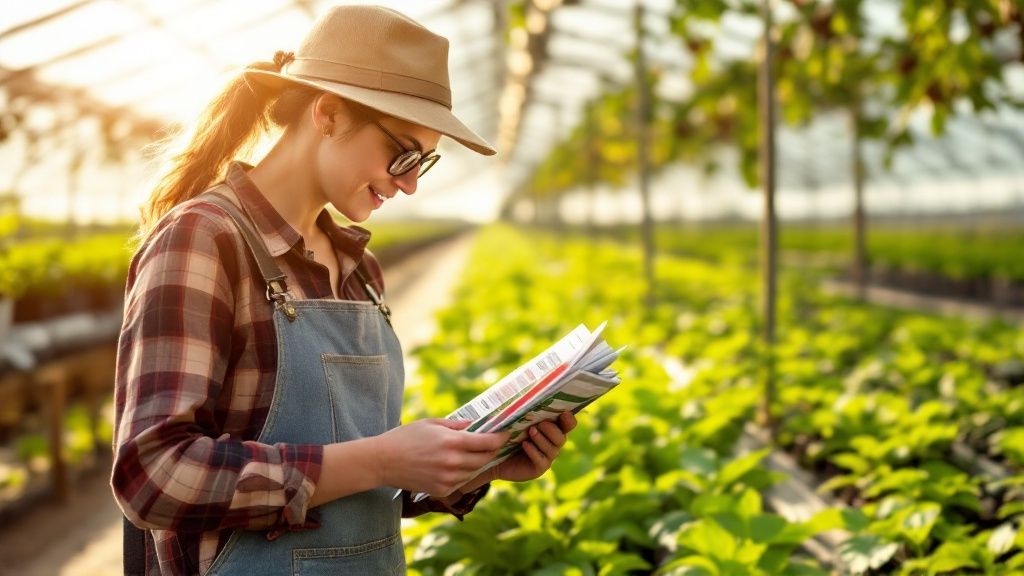
So, you've found your zone. Maybe you're a solid 7a. Now what? This is where the real fun begins. Knowing your zone number transforms a trip to the garden center from a guessing game into a strategic mission. That little tag tucked into the soil of every perennial, shrub, and tree is your new best friend. Look closely, and you'll spot its hardiness rating, usually a range like "Zones 4-8."
Decoding the Plant Tag
That simple range tells you two critical things: how much cold a plant can take and how much heat it can handle.
The first number is the coldest zone it will reliably survive.
The second number is the warmest zone where it won't struggle in the summer heat.
Let's say you're gardening in Zone 6b. You spot a beautiful coneflower (Echinacea purpurea) tagged "Zones 4-8." That's a perfect match! It's tough enough for winters far colder than yours but also resilient enough for summers up to Zone 8. However, if you see a stunning Bougainvillea vine tagged for "Zones 9-11," planting it in a Zone 6b garden is a recipe for heartbreak, as it simply can't handle a true winter freeze.
The Problem-Solution: Zone Pushing
Problem: It’s always tempting. A gardener in Chicago (Zone 6a) falls in love with a Crape Myrtle (Lagerstroemia indica) that’s really meant for Zone 7 and warmer. You might think, "I'll just cover it really well!" This is "zone pushing."
Solution: While it can sometimes work with a ton of babying and a bit of luck, it's often a losing battle. The plant might struggle through a mild winter or two, but one good cold snap will be the end of it. The usda planting zone chart is a fundamental tool that saves you time, money, and frustration. Instead of pushing, choose plants where your zone falls comfortably within the tag's range. It's the single biggest factor in building a resilient garden that thrives with less effort.
Plant Selection Guide Based on Your USDA Zone
Here’s a quick reference to make it even clearer. Find your zone in the first column and see how it matches up with a plant tag's rating.
If You Are In Zone... | And the Plant Tag Says 'Hardy to Zone...' | Can You Plant It? | Example & Notes |
|---|---|---|---|
Zone 6 | 4-8 | Yes, perfect! | Your zone is right in the middle of this plant's happy place. It will handle your winters and summers. |
Zone 6 | 6-9 | Yes, but... | This plant is at its cold limit. Plant it in a sheltered spot away from harsh winter winds for best results. |
Zone 6 | 3-5 | Probably not. | While it will survive your winters easily, your summers will likely be too hot for this plant to thrive. |
Zone 6 | 7-10 | No. | This plant is not cold-hardy enough for your zone. It will not survive the winter outside. |
This simple cross-check is one of the most powerful moves a gardener can make. For even more specific recommendations, our detailed guide on mastering avocado tree planting can help you start with confidence.
How Shifting Climate Zones Impact Your Garden
You might think of the USDA planting zone chart as a static rulebook, but it’s actually more like a living document that reflects our evolving climate. The most recent revision, released in 2023, confirmed what many gardeners have been noticing: things are warming up. The new map shows that about half the country has shifted into a warmer half-zone. For example, a garden that was once a solid Zone 6a might now be considered a slightly milder 6b.
What the 2023 Zone Map Update Means for You
This isn't just an abstract change—it has real-world consequences for your garden. A small shift can open up a world of new possibilities.
New Varieties to Explore: The shift might allow you to experiment with exciting cultivars that were previously out of reach. Perhaps a specific variety of avocado or citrus, once reserved for warmer climates, is now a real contender for your backyard.
Borderline Plants Become Viable: That beautiful fig tree (Ficus carica) you've always dreamed of, once considered a risky "borderline" plant, may now be able to reliably survive the winter.
Perennials Over Annuals: Some tender perennials you might have previously grown as annuals, expecting them to die off, could now have a chance to return each spring.
You can discover more insights about the map's history and recent changes to see just how far the science has come.
Real-World Application: Sam from San Francisco's Garden
Let's look at a practical example. Sam lives in San Francisco, California, which shifted from Zone 8b to the warmer Zone 9a in the 2023 update. For years, he treated his prized Meyer Lemon tree (Citrus × meyeri) as a potted plant, bringing it indoors every winter. With the new 9a designation, he realized his area's average lowest temperature was now consistently above the tree's critical hardiness limit. After consulting with local gardeners on the Tendra app who had already successfully overwintered citrus outdoors, he planted his lemon tree in a sunny, protected spot against his house. It not only survived the winter but thrived, rewarding him with a bountiful harvest. Sam's story shows how understanding the updated USDA planting zone chart can directly lead to a more productive and enjoyable garden.
Your Garden's Success: Beyond the Zone
Your hardiness zone is a fantastic starting point, but it's not the final chapter. The USDA planting zone chart measures just one very specific thing: average lowest winter temperature. It doesn't tell you about summer heat, soil health, rainfall, or humidity. This is why a garden in Zone 8b Seattle looks completely different from one in Zone 8b Austin. The Seattle gardener contends with cool, damp summers, while the Austin gardener battles scorching heat and unpredictable rain.
A plant's survival isn't just about weathering the coldest night of the year; it's about enduring the entire year's worth of conditions your specific spot offers. By paying attention to microclimates and other local factors, you move from following a general rule to truly understanding your unique growing environment. For more tips on sharpening your observation skills, check out how a plant identification app can unlock your garden's secrets.
Grow with Confidence in Your Climate Zone
Mastering the USDA Planting Zone Chart transforms you from a hopeful gardener into a strategic one. It's the key to creating a garden that works with your local climate, not against it. But the best wisdom often comes from right over the fence. Your neighbors are gardening in the exact same conditions, and their successes are priceless lessons. Tendra is built on that very idea, blending powerful climate data with real, local community knowledge.
With access to features like Twin Plant Mates and extensive cultivar databases for plants like avocados and dragon fruit, you can see what truly thrives just a few miles away and get advice from people who have already solved the challenges you’re facing. Understanding the usda planting zone chart is your first step; connecting with your local community is the next.
Discover your local growing community with Tendra — where gardeners connect, grow, and share.
